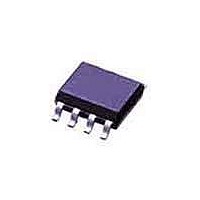1203S08-U THAT Corporation, 1203S08-U Datasheet - Page 6

1203S08-U
Manufacturer Part Number
1203S08-U
Description
Difference Amplifiers High-CMRR Bal Input Line Rec. -3dB SO-8
Manufacturer
THAT Corporation
Datasheet
1.1206S08-U.pdf
(12 pages)
Specifications of 1203S08-U
Maximum Operating Temperature
+ 85 C
Minimum Operating Temperature
0 C
Mounting Style
SMD/SMT
Operating Temperature Range
0 C to + 85 C
Output Current
+/- 25 mA
Operating Supply Voltage
+/- 18 V
Package / Case
SOIC-8
Lead Free Status / RoHS Status
Lead free / RoHS Compliant
Page 6
times making it difficult to locate transformer-cou-
pled equipment to avoid interference.
quire true electrical isolation. In most cases, trans-
formers out-perform conventional input stages only
because they excel at rejecting common-mode signals
in real-world situations. It is no coincidence that the
InGenius concept was developed by an individual re-
sponsible for manufacturing the world's premier line
of audio transformers (Bill Whitlock, of Jensen
Transformers). Bill's InGenius technology offers all
the advantages of solid state input stages, including
dc coupling, negligible phase shift from dc to beyond
the edge of the audio band, and vanishingly low dis-
tortion, along with the primary advantage of a trans-
former:
impedance.
The InGenius Approach
uses bootstrapping to increase common mode input
impedance. With bootstrapping, we first create a rep-
lica of the common mode signal, and then feed it
back appropriately to the inputs to increase the input
impedance. Because doing this in a differential
amplifier involves additional complications, it is use-
ful to review the bootstrap concept with a sin-
gle-ended design first. We will then show how Bill
Whitlock applied that concept to the differential case.
Bootstrapping: a Simple Single-Ended Example
consider the the single-ended bootstrap shown in
Figure 7. In this circuit, amplifier A is configured for
unity gain, and can be considered to have infinite in-
put impedance. Capacitor C
the input impedance, Z
is effectively a short), amplifier A drives the junction
of R
age as V
flows through R
impedance seen at Z
V
Fortunately, audio equipment usually does not re-
The InGenius approach to balanced line receivers
To illustrate the concept behind bootstrapping,
However, for high-frequency AC signals (where C
a
and R
Figure 7. Single-ended bootstrap topology
in
extremely
.
Rs
b
As a result, practically no AC current
through C
a
Zin
. This effectively increases the input
THAT Corporation; 45 Sumner Street; Milford, Massachusetts 01757-1656; USA
in
Rb
Ra
Vin
.
Tel: +1 508 478 9200; Fax: +1 508 478 0990; Web: www.thatcorp.com
high
in
b
, is R
to nearly the same AC volt-
[(R6+R7)||(R8+R9)]
[R5]
b
a
common-mode
+R
blocks DC, so at DC,
C b
b
.
G = 1
A
input
b
and R
and R
hardly involved in this filter.)
the following equation:
20 kΩ. This resistance provides a DC path for am-
plifier bias current. At higher frequencies, the boot-
strap greatly increases the input impedance, limited
ultimately by how close gain G approaches unity.
Common Mode Bootstrapping in an
to recognize that in an instrumentation amplifier, it is
possible bootstrap the common-mode signal to in-
crease common-mode input impedance. This is the
concept behind the InGenius patents.
this works, refer to the circuit of Figure 8.
cuit for the THAT 1200-series ICs. OA
high input-impedance, unity-gain buffers feeding dif-
ferential amplifier OA
fier
input-impedance, unity-gain buffer. With R
the voltage at the input to OA
common-mode component of the input signal. OA
buffers this signal, and feeds it back to both inputs
via capacitor C
Note that in most applications C
Instrumentation Amplifier = InGenius
InGenius High-CMRR Balanced Input Line Receiver ICs
IN-
IN+
Figure 8. THAT1200-series equivalent circuit diagram
The cutoff frequency of the filter formed by C
Input impedance Z
Z
where
For example, if R
The genius behind Bill Whitlock's invention was
Like Figure 1, Figure 8 shows an equivalent cir-
f
f =
n
D
in
a
b
=
configuration.
/R
=
. (Because so little current flows in R
R6
R9
2π
2π (
(
b
R7
R8
R
is determined primarily by the values of C
R C
a
1
R a
R a R b
b
+
+
1
⋅
R
b
R b
CM IN
b
b
and resistors R
)
)
+1
+1
⋅
C
OA1
1 1
OA2
b
R10
24K
24K
R11
+ −
a
(
1
and R
Cb
3
+
in
(
G
in an instrumentation ampli-
OA
; at frequency f, is described
f n
) (
f
+1
2
OA4
)
4
R3
2
R1
f D
f
b
)
are 10 kΩ each, Z
2
is
4
6
b
CM OUT
, R
will be equal to the
is large (>100µf).
7
a
, R
OA3
-
+
24K
R2
R4
R5
1
8
, R
third
and OA
To see how
9
10
, and R
a
= R
, it is
inDC
2
Vout
REF
high
are
11
is
5
b
b
4
,
.














